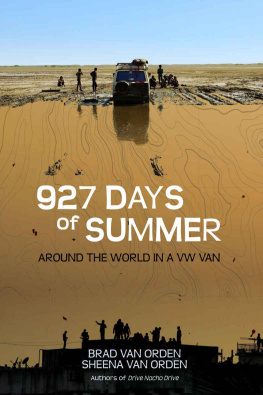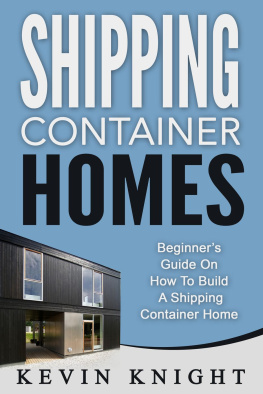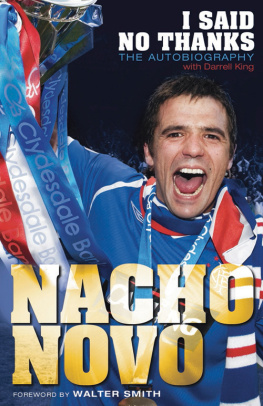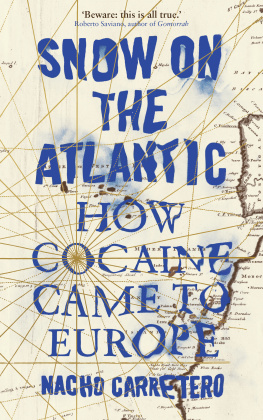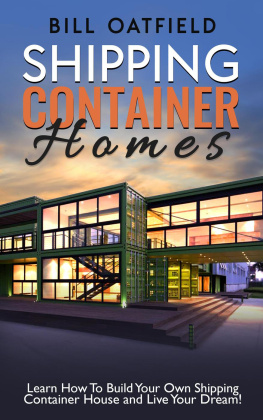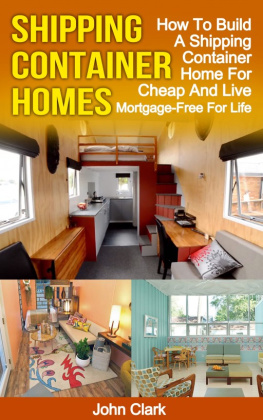Xin Yan Tian Container Vessel
to Kuala Lumpur
Brad
There is one vehicle on Interstate 10 just west of New Orleans that is different from all the rest, its exterior cloaked by a patina of dust that looks permanent like leathery, sunburned skin. Its scarred body panels are a storybook of experiences, which it wears with a well-earned smugness; a shrapnel-torn tank returning triumphantly from the battlefield. A long gouge on one side terminates in a dramatic dent at the rear fender, evidence of having sideswiped a bus in the dense, sweltering hornet's nest of vehicular chaos in Varanasi, India. An ammunition can bolted to the front bumper bears the indentation of a concrete road marker from somewhere in the Cambodian countryside. The wind causes the passenger side mirror to rock loosely on its mount, the result of an overzealous Kathmandu bus driver with poor depth perception. The hurried drivers zipping past in the left hand lane of this American interstate pay no mind to the dented window frame on the old van's driver's side door, left there by the metal rod of an Argentinean thief.
I sit in the driver's seat, my left elbow propped on the windowsill, my hand resting loosely on the steering wheel much as I had over the course of the past two-and-a-half years since Nacho had last plied the roadways of North America. We are often asked why we chose to name our 1984 Volkswagen van Nacho, but there isn't a good story to tell. We had picked it up from a girl in Hollywood where it bore the name Whoopi. But every long distance traveling steed needs a strong and dependable name, and Whoopi would not do. We settled on Ignacio Nacho for shorta tip of the hat to Mexico, which would be the first country we would cross on our around-the-world drive.
Sheena stares ahead from the passenger seat in a familiar way, watching the scene unfold through the wiper-streaked windshield that somehow, after having circumnavigated the entire globe, managed to emerge without a single chip or crack.
The highways in North America are too straight. It is no wonder that drivers fall asleep at the wheel. We have just crossed a long straight bridge over a nameless body of water, and now we are driving a straight line carved out through the low trees of the Louisiana swampland. In places the roadway is supported by stilts so as to rise above the marsh. I keep a hopeful eye out for alligators, but the only wildlife I see here are the long-legged white birds that stand in the shallows and pick tadpoles with their skinny beaks. American roads are too straight because to make unnecessary curves would add cost, and it would ultimately take longer to get from one place to another. The American landscape is a pattern of straight roads in constant flux toward a state of pure efficiency. There are no unplanned features on these paved surfaces, and there are few curves to mind, so it is easy to mentally drift away.
Ahead the white lines denoting the road shoulders shoot forward like perfectly straight arrows, culminating at a single point on the horizon, laser beams shooting a distant enemy. My mind runs with the image, and then wanders off like a lost soul.
I am the commander of a futuristic army and only my van's twin laser beams can save the planet's needy children. I am three, and I have gone to work with my father without my pants, and for the first time I realize that I am too old to be naked in public and I feel ashamed. I am driving a miniature car in a parade to celebrate the birthday of Chairman Mao, but I run out of gas, thus embarrassing myself and bringing shame upon the car's owner. I deliver strict instructions to a group of my Chinese border guard subordinates and they salute me by stomping one foot and slapping their rifles with their gloved hands.
It is no wonder people fall asleep at the wheel on American highways.
From the ramshackle border towns of Mexico to the sticky jungles of Panama, and onward to the windswept, featureless landscapes of Patagonia there was always something to keep a driver's mind occupied. Driving the routes that made up the Pan-American Highway, from Tijuana to the Straits of Magellan, had been more akin to mountain biking than driving, zigzagging across roadways to miss boulders and potholes and the places where the road had flaked off into the abyss. To drive to Tierra del Fuego was to drive a quarter of the way around the globe on a forlorn power line road. Boredom is a featureless interstate, white lines converging on the horizon, but it was nearly impossible to fall asleep at the wheel on the Pan-American.
On a nondescript section of highway bordered by a concrete barrierprotection against dozing off into the swamp, surelyone front tire becomes misshapen and begins to grumble and shake as if flailing a whipping chain against the ground with each revolution. The grumbling shakes me from my Chinese border post and at once I pull over. While crossing Patagonia our tires had taken so much abuse as to give up the ghost, and they had begun popping nearly every day. I had gone to extreme measures to get us to Buenos Aires. One evening on the beach near Puerto San Julian, after slashing two tires in a day, I had used a fish hook and a length of 120 pound fishing line to stitch up a ripped sidewall. It held air until we reached a tire repair shop twenty miles away the following day. After leaving South America by ship, and after much searching, I had finally procured a new set of tires from a man in a dirty tee shirt who spoke no English, and who conveyed the virtues of my new tires through wild hand gestures and unintelligible sounds like a verbal machine gun. This tire had been through hell and back, diving in and out of bomb craters across the subcontinent of India, traversing the Himalayas, and crossing the Sahara. Now, on a boring stretch of Interstate 10 outside of New Orleans where the pavement is featureless and pancake flat and the white lines shoot the horizon like laser beams, the sidewall bulges out, the tread delaminates, and the tire finally pops.
There are millions of miles of roads on this planet, and our path had comprised a great number of them linked together to make a meandering line around the world, broken up by several stretches of ocean. Our tire popped at precisely this location as a result of a string of hastily-made and ill-advised decisions.

